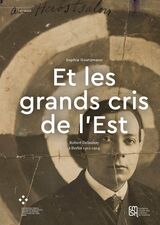
Dans un premier temps, ce livre retrace en détail ce qui a été alors lu et vu de l’œuvre de Delaunay dans la capitale allemande. Ensuite, à travers l’étude de la réception critique du peinte français par trois figures majeures de la scène artistique berlinoise, il revient sur l’idée que le contexte culturel national entraverait la compréhension d’une œuvre ou en influencerait systématiquement les interprétations. En dépassant ainsi les préjugés nationaux qui nourrissent les débats esthétiques au début du XXe siècle et continuent d’imprégner aujourd’hui encore l’histoire de l’art, Sophie Goetzmann nous révèle les liens inattendus qui unissent, par-delà les frontières, les avant-gardes désignées sous les termes d’orphisme et d’expressionnisme.

This rare find--a journal of a young backwoods woman--provides a unique picture of rural life in southwestern Alabama early in the 20th century.
"I am a little Alabama girl living on the frontier where the wild animals is plentiful," wrote May Jordan in 1912. During the hunting season her father traveled Washington County buying furs, and May--already 23--accompanied him on two of these trips, cooking meals, helping out with the business, and recording their experiences.
May's diary of these trips from December 1912 to March 1914 describes the routine of the fur trade and provides a vivid portrait of wilderness travel and social customs. Through May's eyes, readers can experience the sights and sounds of pine forests and swamps, the difficulty of wading through waist-deep mud, and the neighborliness of the people living in this isolated area. May also shares both the solace of religious faith and her love of laughter as reflected in the jokes she records.
Elisa Moore Baldwin provides an introduction that traces Jordan family history and describes economic, social, and political conditions during the period. Baldwin also includes annotations based on court records, census rolls, and other primary sources and photographs of many of the characters in May's narrative to provide a vivid picture of the times. Because few first-person accounts exist of the life of poor whites, this diary will be invaluable to students of southern and women's history; no comparable work exists for this part of Alabama during this era. May's journal takes us to another world and teaches us about the lively human spirit in the face of hardship and loneliness.
READERS
Browse our collection.
PUBLISHERS
See BiblioVault's publisher services.
STUDENT SERVICES
Files for college accessibility offices.
UChicago Accessibility Resources
home | accessibility | search | about | contact us
BiblioVault ® 2001 - 2024
The University of Chicago Press









